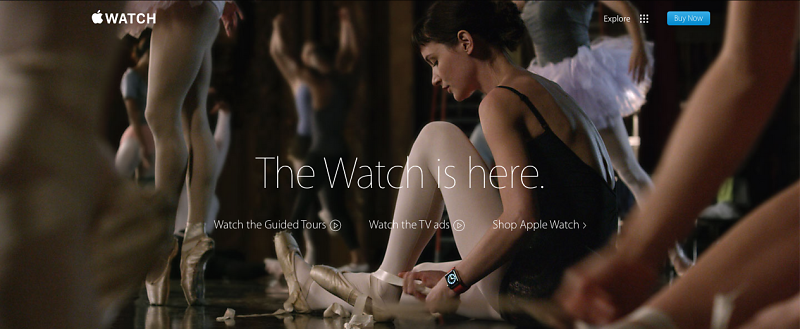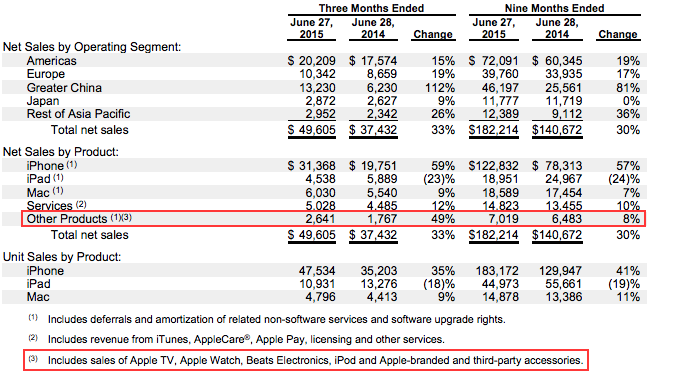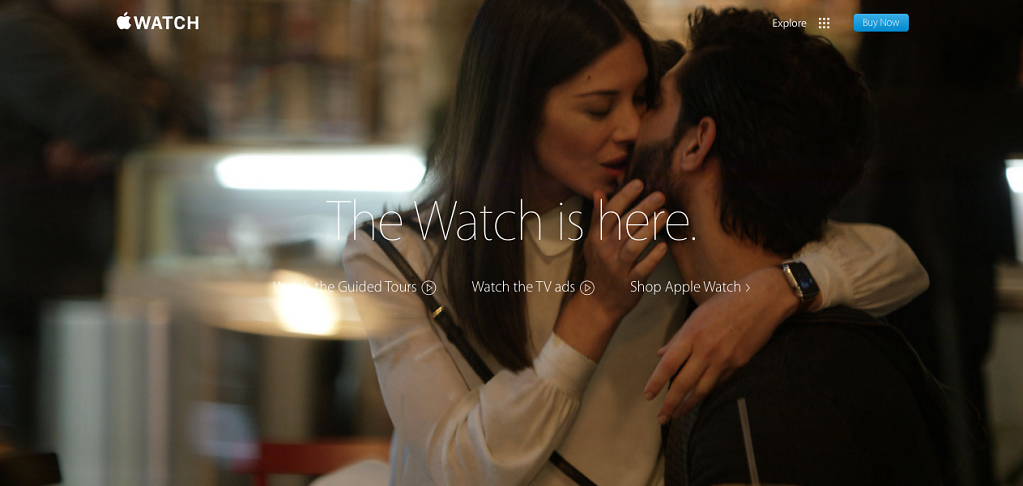[blog] [photos] [random post] [about/contact] [quotes] [other]
The Apple Watch is a Complementary Product

Apple Watch for the Apple Ballerina
The Apple Watch is not a seriously compelling product, nor will it ever be as (a) useful or (b) revolutionary as the iPhone. Apple knows this, and despite what pundits and analysts might think, it doesn’t care.
Tim Cook and Johnny Ive may present the Apple Watch as an incredibly novel, sexy-as-hell product in a nascent, high-value market, but they do that with every new Apple product line because it’s their job. They know very well that the Apple Watch will not see iPhone-like, extreme revenue generation.
Apple Watch was not designed to be a high-growth, standalone product. It was designed to be a companion to the iPhone. As such, Apple Watch success will be a direct function of iPhone success. As long as the iPhone continues to sell in mind-boggling quantities with a mind-boggling growth rate1 the Apple Watch will enjoy a growing market as a complementary product with recurring revenues every 2 years or so, in line with the iPhone.
While sales of the iPhone and the Apple Watch will not match up 1:1,2 the ratio will still be high enough for Apple to make a decently profitable side business out of selling watches to a growing subset of consumers who will find some set of tenuous and borderline-indescribable reasons to purchase one.3
Apple Watch Financial Estimates
The Apple Watch has been available to the general public for 3 months (one financial quarter), so Apple’s latest quarterly earnings report included revenues from the new product line. Apple breaks its product revenue out by iPhone, iPad, Mac, Services, and Other [see image below]. Apple Watch revenue has been lumped into the “Other” category, drawing further attention to Apple’s view of the watch as an ancillary product such as Apple TV and Beats.

Source: Apple Q3 2015 Report
Most analysts have deduced around $1bn in revenue and 2-3m in unit sales based from these numbers. This is not the definition of a failed product. It’s also not the definition of a success, given Apple’s record-breaking standards and $710bn market cap.
First Generation Is Not the Problem
Ok great, so the Apple watch has had a mediocre first 3 months on the market. What about the future? Doesn’t Apple have a track record of dramatically improving upon first generation products and turning them into ball-bustingly, gut wrenchingly, investor-palms-sweateningly efficient money machines?
Some definitely think so. They are the First-Gen Evangelists (FGE) as I’ll dub them. Here’s a cautiously optimistic FGE on the NY Times who opens with a strangely unsettling comparison between the Apple Watch and his infant daughter:
Asking if the Apple Watch will become a hit or a flop is a bit like asking if my 2-year-old daughter is destined to go to Yale or to jail. Interested parties can speculate on the basis of thin evidence — she learned to walk pretty early, though on the other hand, she still thinks cats say “bow wow” — but youth is inherently unpredictable, and anyone venturing a long-term forecast based on short-term performance runs the risk of looking quite silly.
After running through some numbers from a user satisfaction survey (97% of respondents either very or somewhat satisfied with the device) and citing the fact that “a slim majority” of the first-wave of customers described themselves as “non-techies” which is theoretically good news because it means the product will gain traction in the mass-market, he states his conclusion at the bottom of the article:
Bit-by-bit improvements are part of Apple’s modus operandi. We saw it with the iPod, the iPhone and the iPad. After creating something new, the company continually adds small new features over time. Over a few years, this turns an initial burst of interest about Apple’s newest thing into a long-term tech institution that just about everyone can use and enjoy. That’s happening with the watch, and the strategy just might work.
Here’s my take: this incremental value FGE argument of “Look at the iPhone, look at the Apple watch; their growth projections will be equivalent” is fatally flawed. The iPhone and the Apple Watch are fundamentally different to an intractably large degree making comparisons of their growth trajectories nonsensical.
FGEs point out that the hardware and software of the Apple Watch will get better over time, much as the iPhone’s did. Fine. But the underlying form factor of the device — a health tracker that makes it easier to read notifications from your phone — will not change.
While the first generation iPhone started out buggy and feature-sparse, the form factor was completely revolutionary: a phone with a touch screen and internet capabilities. A mini-computer in your pocket, rather than just a phone. It set itself up for future success as wifi, 3g + 4g networks, and the app ecosystem developed over the next decade.
FGEs will argue that there will be a different ecosystem of apps for the Apple Watch. To that I would say, fine, but what are the inputs, mediums, and outputs of this new form factor? What data collection, processing, and presentation applications will be better on the Apple Watch than they are on a smartphone or a computer? What new and compelling apps are possible from these new IO and processing capabilities?
The only input that the Apple Watch gets that is different from a smartphone is from its physical location on the user’s wrist — a pulse. Otherwise, outputs will be relatively restricted and less useful than the iPhone’s outputs due to the watch’s smaller screen. Who wants to play a game, read a book, or surf the web on a watch? Nobody.4

A whole new dating experience
The Apple Watch is a glorified fitness tracker5 that obviates the need to take your phone out of your pocket to check notifications.6 Its secondary function is a marker of status, but there are plenty of other things you could buy to signal wealth to potential mates.
Conclusion

Record yourself making out with a date you scored on Tinder: Apple Watch Edition
The smartwatch form factor is not revolutionary and does not enable a large potential market for uses. The FGE argument is not compelling due to the lack of different inputs and outputs made possible by the device, which will narrowly constrain the app market.7 Apple doesn’t care, and will make a tidy profit from the product as a function of increasing iPhone sales while sacrificing a bit of its reputation as a cutting-edge innovator that only ships revolutionary new form factors, “Steve Jobs would be ashamed!”, etc. etc. A worthy tradeoff for investors at the end of the day, with iPhone sales growing 80% YoY in China, and no slowdown in sight.
Footnotes
-
183m units sold for $123bn in revenue from Oct. 2014 — Jun. 2015 (9 months), up a whopping 57% from the same period last year.^
-
Q3 Ratio: 3m Apple Watch / 47.5m iPhone = 6.3%. In other words, 6 new Apple Watches sold to every 100 new iPhone customers. In actuality the ratio is much smaller given number of existing iPhones in the market place and the generous 3m used for Q3 Apple Watch sales.^
-
From my initial research there are 3 “major” benefits of owning an Apple Watch: 1. Fitness Tracking 2. Remote for iPhone & Apple TV 3. Quicker use of Apple Pay^
-
Let’s not even go into processing power and battery life comparison here.^
-
Do I really care about my pulse/heart rate? I just strap my iPhone to my arm and then I can listen to music while I track my run too!^
-
It’s not even great for this purpose, as checking your watch is no less awkward or rude in a social situation.^
-
You know you’re in trouble when you have to advertise heartbeat sharing as one of the cool functions of the new device.^
[blog] [photos] [random post] [about/contact] [quotes] [other]

© Roy Murdock, All rights reserved.
